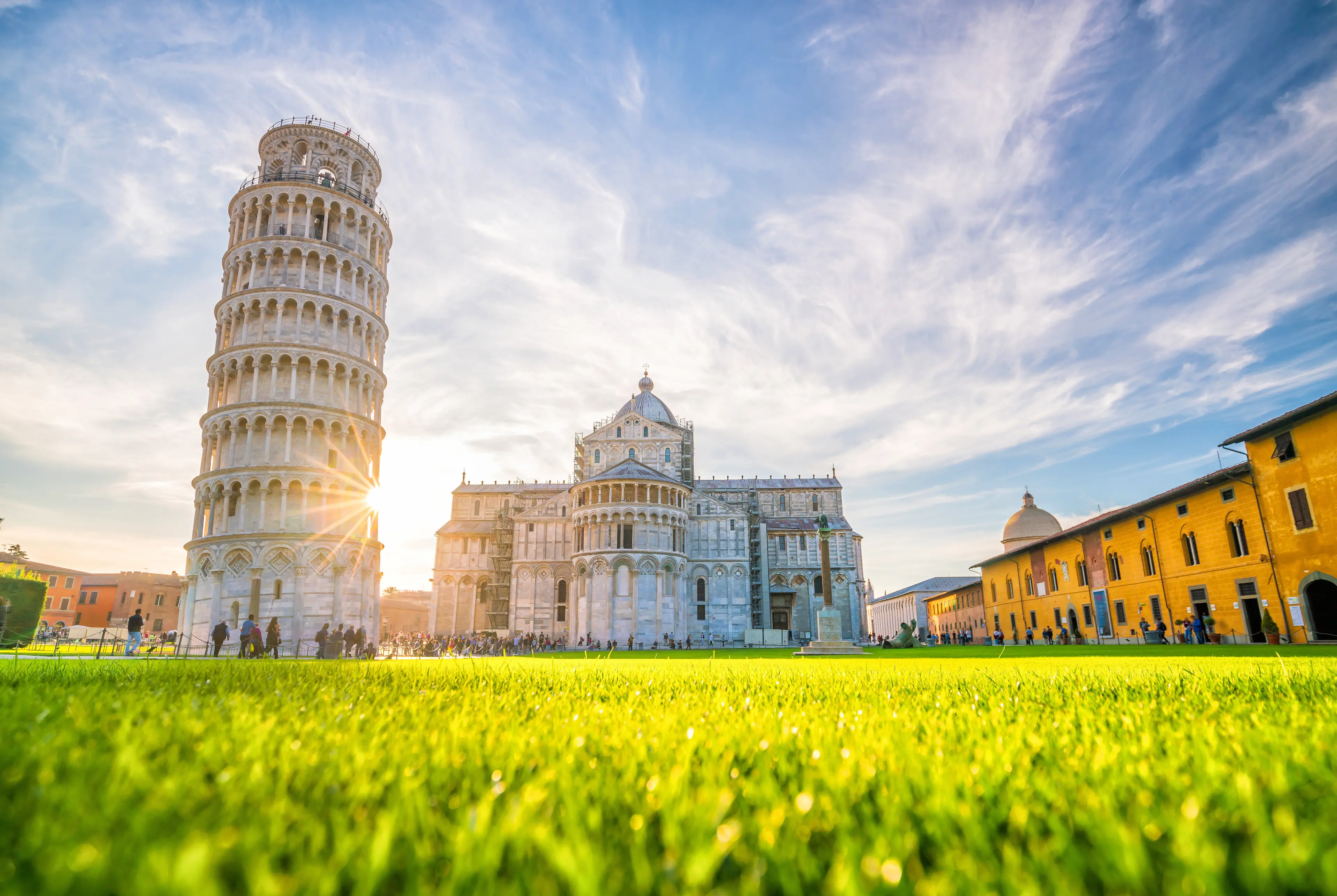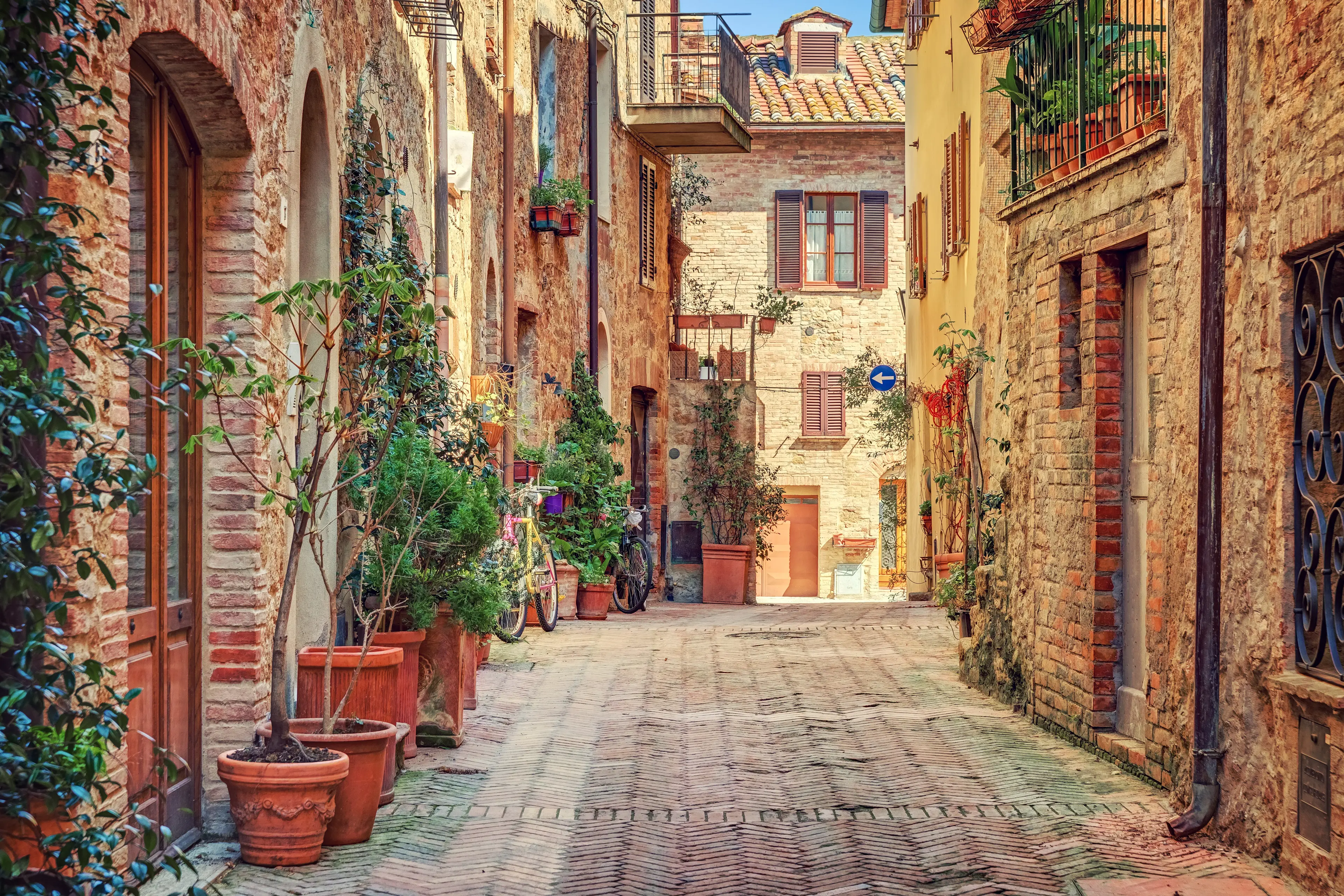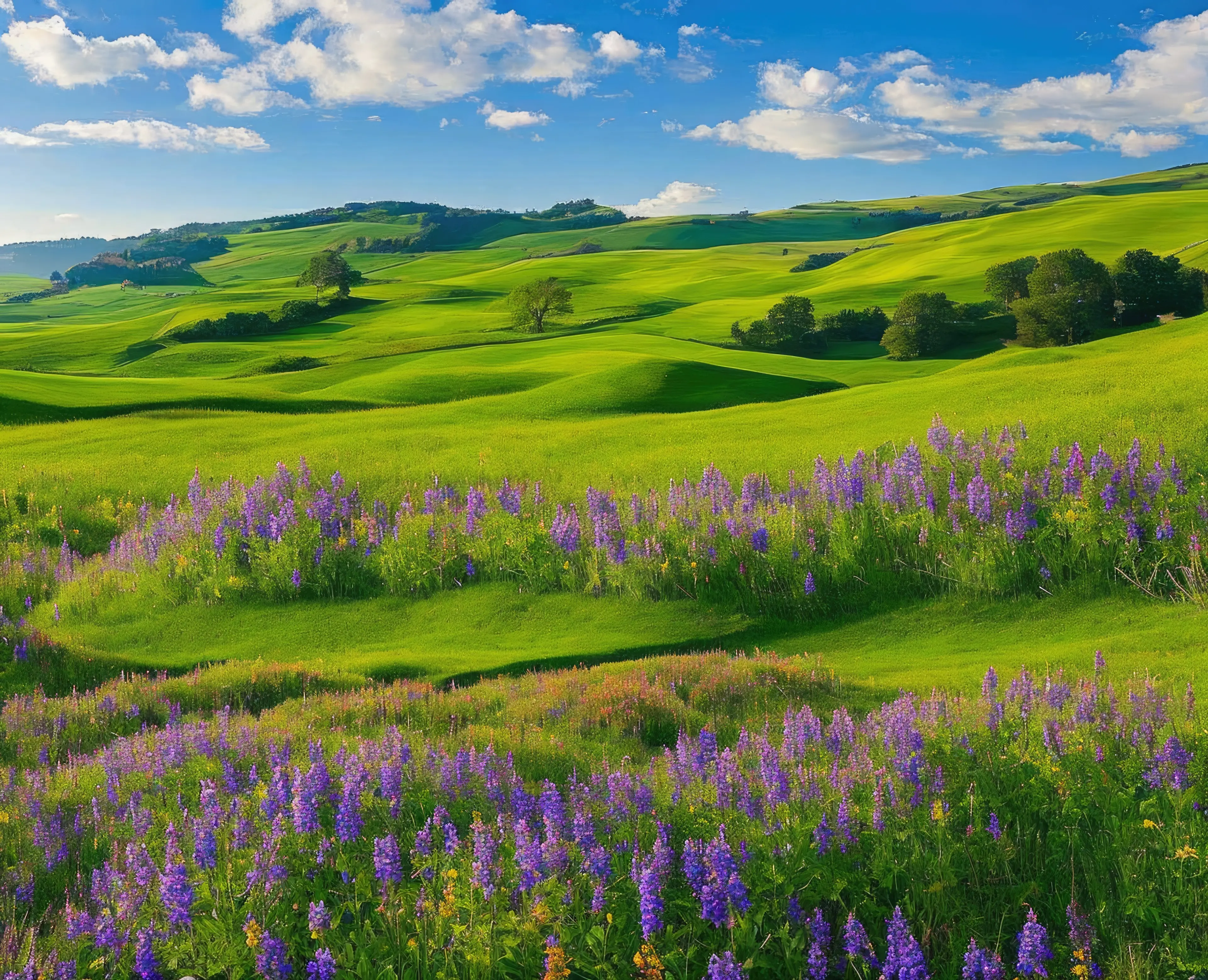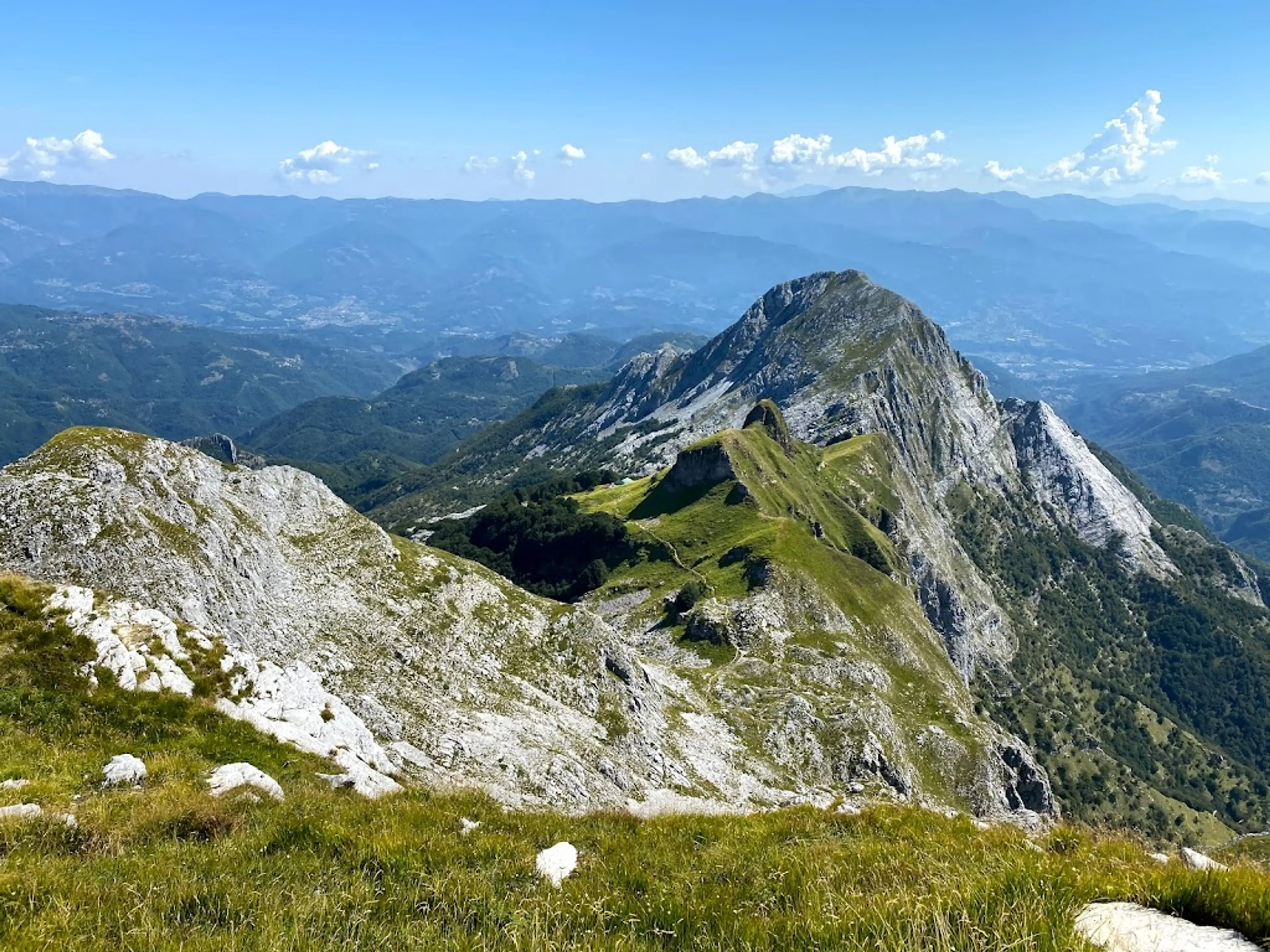4-Day Unique Tuscany Itinerary: Relaxation & Outdoor Fun for Couples
Tuscany, Italy
4 days





About Tuscany, Italy
Experience the heart of Italy in Tuscany, a region renowned for its breathtaking landscapes, rich history, and world-class wines. Discover the enchanting cities of Florence, Pisa, and Siena, each brimming with iconic architecture and priceless art. Explore the picturesque countryside dotted with medieval hilltop towns, vineyards, and olive groves. Indulge in the region's gastronomic delights, from its famous Chianti wines to its mouthwatering local cuisine. Whether you're seeking cultural immersion, culinary adventures, or simply the serene beauty of the Tuscan countryside, Tuscany offers an unforgettable Italian experience. Let us plan your perfect Tuscan getaway.
4-Day Itinerary
Day 2
Discovering Siena and the Tuscan Countryside
Morning
Visit the medieval town of Siena. Explore the Piazza del Campo and the stunning Siena Cathedral.
Lunch
Have lunch at a local pizzeria. Try a pizza topped with local ingredients, such as Tuscan sausage and pecorino cheese.
Afternoon
Take a guided tour of the Tuscan countryside. Visit a local farm and learn about the region's agricultural traditions.
Dinner
Enjoy a romantic dinner at a countryside restaurant. Sample local dishes, such as pici pasta and wild boar ragu.
Evening
Stargaze in the Tuscan countryside. The clear skies and lack of light pollution make for a spectacular view.
Day 3
Visiting Lucca and the Garfagnana Region
Morning
Explore the charming town of Lucca. Walk along the ancient city walls and visit the Guinigi Tower.
Lunch
Have lunch at a local café. Try the torta di verdure, a traditional vegetable pie.
Afternoon
Visit the beautiful Garfagnana region. Take a hike in the Apuan Alps and enjoy the stunning views.
Dinner
Have dinner at a mountain trattoria. Try the farro soup, a hearty dish made with spelt and beans.
Evening
Relax at your accommodation and enjoy the tranquility of the Tuscan mountains.
Day 4
Enjoying the Coast of Viareggio and the Versilia Region
Morning
Visit the coastal town of Viareggio. Enjoy a walk along the promenade and a swim in the Tyrrhenian Sea.
Lunch
Have lunch at a seaside restaurant. Try the cacciucco, a traditional seafood stew.
Afternoon
Explore the beautiful Versilia region. Visit the Marble quarries of Carrara and the artist town of Pietrasanta.
Dinner
Enjoy a farewell dinner at a local restaurant. Sample a variety of Tuscan dishes and wines.
Evening
Spend your last evening in Tuscany relaxing at your accommodation and reminiscing about your trip.
Attractions in Itinerary (7)

1Uffizi Gallery
One of the most important Italian museums, and the most visited, it is also one of the largest and best known in the world, and holds a collection of priceless works, particularly from the period of the Italian Renaissance.

2Chianti region
A region of Tuscany, known for its sweeping landscapes and the production of its famous Chianti wine.

3Piazza del Campo
One of Europe's greatest medieval squares, the principal public space of the historic center of Siena.

4Siena Cathedral
A magnificent Italian Romanesque-Gothic cathedral. Its main façade was completed in 1380.

5Guinigi Tower
A tower in Lucca with a garden on its top, it offers panoramic views of the city.

6Apuan Alps
A mountain range known for its hiking, climbing, and caving opportunities.

7Marble quarries of Carrara
The marble quarries of Carrara are one of the many treasures in Tuscany. Visitors can tour the quarries and see where Michelangelo sourced the marble for his famous sculptures. The quarries offer a unique insight into the history and culture of the region.
Local Food and Drinks (12)

Bistecca alla Fiorentina
A large, thick cut of T-bone steak from the Chianina cattle breed, traditionally cooked over a wood or charcoal fire. It's a must-try dish for meat lovers visiting Tuscany.

Panzanella
A traditional Tuscan salad made from stale bread soaked in water and squeezed dry, then mixed with fresh tomatoes, onions, basil, olive oil, vinegar, and salt. It's a perfect example of Tuscan cuisine's resourcefulness.

Pappa al Pomodoro
A thick, hearty soup made from ripe tomatoes, stale bread, olive oil, garlic, and basil. This dish is a staple of Tuscan cuisine and a testament to the region's love for simple, flavorful ingredients.

Ribollita
A hearty Tuscan soup made from bread and vegetables, including cabbage, beans, and onions. Ribollita means 'reboiled' in Italian, as the soup was traditionally made by reheating leftover minestrone or vegetable soup from the previous day.

Crostini Toscani
Toasted bread topped with a flavorful chicken liver pate. This appetizer is a staple in Tuscan cuisine and is often served at the start of a meal.

Chianti
A robust red wine produced in the Chianti region in Tuscany. It's known for its bold flavor and high acidity, making it a perfect pairing for rich Tuscan dishes.

Vin Santo
A sweet dessert wine made from dried grapes. In Tuscany, it's traditionally served with cantucci (almond biscuits) for dipping.

Cantucci
Almond biscuits that are traditionally served with Vin Santo, a sweet dessert wine. The biscuits are twice-baked, making them perfect for dipping.

Pecorino Toscano
A firm, sheep's milk cheese that's produced in Tuscany. It can be enjoyed on its own, with bread, or with a drizzle of honey.

Prosciutto Toscano
A type of dry-cured ham that's produced in Tuscany. It's typically seasoned with a mix of local spices and herbs, giving it a distinct, flavorful taste.

Acquacotta
A traditional Tuscan soup that was originally a peasant dish. It's made with simple ingredients like onions, tomatoes, olive oil, and stale bread, and often includes a poached egg.

Lampredotto
A popular street food in Tuscany, lampredotto is a sandwich made from the fourth stomach of a cow, typically served with a spicy sauce or a green sauce made from parsley.
Best time to visit
The best time to visit Tuscany, Italy is during the spring (April to June) and fall (September and October). During these months, the weather is generally mild and the crowds are less intense than in the peak summer season. The countryside is in full bloom in spring, while the fall offers a beautiful display of autumn colors. Additionally, many local food festivals occur in the fall, providing a rich cultural experience.
How to get around
Car Rental
Renting a car is one of the most popular ways to get around Tuscany. It gives you the freedom to explore the region at your own pace and visit remote areas that are not easily accessible by public transport. Remember to familiarize yourself with the Italian driving laws and regulations before your trip.
Train
Tuscany has a comprehensive train network that connects all the major cities and towns. The trains are comfortable and punctual, making it a convenient way to travel around the region. The main train stations in Tuscany are in Florence, Pisa, and Siena.
Bus
Buses are another common mode of transport in Tuscany. They are especially useful for reaching smaller towns and villages that are not served by the train network. The bus service in Tuscany is reliable and relatively inexpensive.
Bicycle
Cycling is a popular and eco-friendly way to explore Tuscany. The region is known for its beautiful landscapes and cycling routes. You can rent a bicycle in most towns and cities.
Ridesharing
Ridesharing services like Uber are available in some parts of Tuscany, including Florence and Pisa. This can be a convenient and cost-effective way to get around, especially if you're traveling in a group.
Taxi
Taxis are readily available in all major towns and cities in Tuscany. They can be hailed on the street, booked in advance, or found at taxi ranks. Taxis are metered, so the fare will depend on the distance traveled.
Foot
Many of Tuscany's towns and cities, such as Florence, Pisa, and Siena, are best explored on foot. These places have pedestrian-friendly city centers with many attractions located within walking distance of each other.
Scooter
Renting a scooter is a fun and efficient way to get around Tuscany. It allows you to navigate the narrow streets of the towns and villages with ease. However, you should be comfortable with driving a scooter and aware of the local traffic rules.
Private Driver
For a more comfortable and hassle-free travel experience, you can hire a private driver. This service is particularly useful for those planning to visit multiple destinations in one day or those who prefer not to drive themselves.
Important information
Currency€ EUR
Time zoneUTC+1
Driving sideRight
Emergency phoneAmbulance: 112, 118; Fire: 112, 115; Police: 112, 113;
Drinking waterYes, but some opt for bottled water
Power sockets
Voltage230 V
Things to know about Tuscany, Italy as a first time visitor
1
Tuscany is located in central Italy and is known for its landscapes, history, artistic legacy, and its influence on high culture.
2
The official language is Italian, but English is widely spoken in tourist areas.
3
The currency used in Tuscany is the Euro (€). Credit cards are widely accepted, but it's always good to have some cash on hand.
4
Tuscany has a Mediterranean climate with hot, dry summers and mild, wet winters. The average summer temperature is around 86°F (30°C), while in winter it can drop to around 46°F (8°C).
5
Tipping is not mandatory in Italy, but it is appreciated. In restaurants, a tip of around 10% is considered generous.
6
Tuscany is in the Central European Time Zone (CET), which is 1 hour ahead of Greenwich Mean Time (GMT+1).
7
Public transportation is reliable and extensive. It includes buses, trams, and trains. Renting a car is also a good option if you plan to explore rural areas.
8
It's important to dress modestly when visiting churches or religious sites. Shoulders and knees should be covered.
9
Italy uses type L power sockets. The standard voltage is 230 V, and the standard frequency is 50 Hz.
10
Tap water is safe to drink in Tuscany, and it's common to order tap water in restaurants.
11
Italians usually have a light breakfast, a large lunch, and a late dinner. Don't be surprised if restaurants don't open for dinner until 7:30 PM or later.
12
Tuscany is known for its wine, so consider visiting a local vineyard or participating in a wine tasting.
13
Be aware that many shops and businesses close for a few hours in the afternoon for 'riposo', or rest time.
14
It's common to greet people with two kisses, one on each cheek, starting with the right. This is typically only between friends and family, not between strangers.
15
It's customary to say 'buongiorno' (good morning) or 'buonasera' (good evening) when entering shops and restaurants.
16
Many museums and attractions are closed on Mondays.
17
It's common in Italy to charge a 'coperto', a small cover charge for bread and service, in restaurants.
18
Pharmacies in Italy are marked by a green cross and have limited operating hours. For emergencies, look for a 'farmacia di turno', which is open 24 hours.
19
In case of emergency, the general emergency number in Italy is 112.
20
Travel insurance is recommended for all travelers to cover any unexpected incidents or cancellations.
Basic Italian to know as a first time visitor
English phrase | Native phrase | Pronunciation | When to use it |
|---|---|---|---|
Hello | Ciao | Chow | Greeting someone |
Goodbye | Arrivederci | Ah-ree-veh-der-chee | Saying goodbye |
Please | Per favore | Per fa-voh-reh | Making a request |
Thank you | Grazie | Gra-tsee-eh | Expressing gratitude |
Yes | Sì | See | Agreeing or confirming |
No | No | No | Disagreeing or denying |
Excuse me | Scusa | Skoo-sah | Getting attention or apologizing |
I don't understand | Non capisco | Non ka-peeskoh | Communicating lack of understanding |
Do you speak English? | Parli inglese? | Par-lee in-gleh-zeh? | Asking if someone speaks English |
I'm sorry | Mi dispiace | Mee dee-spya-che | Apologizing |
Where is...? | Dove è...? | Doh-veh eh...? | Asking for directions |
Bathroom | Bagno | Bahn-yoh | Looking for the restroom |
Help | Aiuto | Ah-yoo-toh | In case of emergency |
Good morning | Buongiorno | Bwon-jor-no | Greeting someone in the morning |
Good night | Buonanotte | Bwoh-na-not-te | Saying goodnight |
Food | Cibo | Chee-boh | Talking about food |
Water | Acqua | Ah-kwah | Asking for water |
Check, please | Il conto, per favore | Il con-toh, per fa-voh-reh | Asking for the bill in a restaurant |
How much does it cost? | Quanto costa? | Kwan-toh cost-ah? | Asking the price of something |
I would like... | Vorrei... | Voh-rey... | Making a request or order |
Packing List
Clothing
Underwear for 5 days
Socks for 5 days
2-3 pairs of pants or shorts
4-5 shirts (mix of short sleeve and long sleeve)
1 light jacket or sweater
1 pair of comfortable walking shoes
1 pair of dress shoes
1 dressy outfit for fine dining
1 swimsuit
1 hat for sun protection
1 pair of sunglasses
1 rain jacket or umbrella
Toiletries
Travel-sized shampoo and conditioner
Travel-sized body wash or soap
Toothbrush and toothpaste
Deodorant
Razor and shaving cream
Makeup and makeup remover
Sunscreen
Insect repellent
Prescription medications
First-aid kit (band-aids, antiseptic wipes, tweezers)
Travel documents and essentials
Passport
Driver's license or ID card
Credit and debit cards
Cash in local currency (Euros)
Travel insurance documents
Hotel and car rental reservations
Emergency contact information
Guidebook or map
Electronics and gadgets
Smartphone
Charger for smartphone
Universal power adapter
Digital camera or GoPro
Charger for camera
Portable power bank
Headphones or earbuds
Miscellaneous items
Travel pillow and blanket
Snacks for travel
Reusable water bottle
Books or e-reader for entertainment
Travel-sized laundry detergent
Plastic bags for dirty clothes
Travel-sized hand sanitizer
Face masks
Weather Conditions
Tuscany, Italy is a region known for its mild Mediterranean climate, which makes it an attractive destination for tourists year-round. However, the weather can vary depending on the season, so it's essential to plan your visit accordingly. Spring (March to May) is a beautiful time to visit Tuscany, as the weather is generally mild with temperatures ranging from 60-75°F (15-24°C). It's an ideal time for outdoor activities like hiking and sightseeing. However, it's also the start of the rainy season, so don't forget to pack a light raincoat or umbrella. Summer (June to August) in Tuscany can get quite hot, with temperatures often reaching up to 90°F (32°C). It's a great time for beach activities along the Tuscan coast. However, the heat can be intense, especially in the cities, so it's advisable to stay hydrated and wear sun protection. Autumn (September to November) sees a drop in temperatures, ranging from 50-70°F (10-21°C), and an increase in rainfall. It's a fantastic time to visit if you're interested in wine, as it's the grape harvest season. Just remember to pack some warm clothing and rain gear. Winter (December to February) in Tuscany is relatively mild compared to other parts of Europe, with temperatures usually between 40-55°F (4-13°C). It's the perfect time to explore the cities without the crowds, but do pack warm clothing as it can get chilly, especially in the evenings. Regardless of when you visit, remember that the weather can change quickly in Tuscany, so it's always a good idea to check the forecast regularly and pack layers to accommodate varying temperatures. Enjoy your trip to this beautiful region!
| Month | Hi / Lo (°C) | Weather Overview |
|---|---|---|
January | 13° / 1° | January is the coldest month in Tuscany, with temperatures often dropping to near freezing. It's a quiet time for tourism, so you'll have the region's attractions mostly to yourself. |
February | 14° / 2° | February is still quite chilly, but the days are getting longer. It's a good time to visit if you want to avoid crowds and enjoy the region's indoor attractions. |
March | 17° / 5° | March sees the start of spring in Tuscany, with temperatures gradually warming up. The countryside begins to bloom, making it a beautiful time for outdoor activities. |
April | 20° / 8° | April is a pleasant month in Tuscany, with mild temperatures and plenty of sunshine. It's a great time to explore the region's vineyards and olive groves. |
May | 23° / 11° | May is a wonderful time to visit Tuscany, with warm temperatures and long, sunny days. The countryside is in full bloom and the region's festivals begin. |
June | 27° / 15° | June marks the start of summer in Tuscany, with hot temperatures and plenty of sunshine. It's a great time to visit the region's beaches and enjoy outdoor dining. |
July | 30° / 18° | July is the hottest month in Tuscany, with temperatures often exceeding 30 degrees. It's a busy time for tourism, with many festivals and events taking place. |
August | 30° / 18° | August is another hot month in Tuscany, with temperatures similar to July. It's a popular time for tourists, so expect crowded beaches and busy attractions. |
September | 27° / 15° | September sees the start of autumn in Tuscany, with temperatures gradually cooling down. The vineyards are in full harvest, making it a great time for wine lovers. |
October | 23° / 11° | October is a pleasant month in Tuscany, with mild temperatures and beautiful autumn colors. It's a quieter time for tourism, so it's a good time to visit if you want to avoid crowds. |
November | 19° / 7° | November is a cooler month in Tuscany, with temperatures dropping and more rainfall. It's a quiet time for tourism, but you can still enjoy the region's indoor attractions. |
December | 15° / 3° | December is a chilly month in Tuscany, with temperatures often dropping to near freezing. It's a festive time in the region, with Christmas markets and events taking place. |
Did you know?
Places near by Tuscany, Italy

Leaning Tower of Pisa
One of the most famous landmarks in Italy, known for its unintended tilt.

Cinque Terre
A string of centuries-old seaside villages on the rugged Italian Riviera coastline.

Bologna
Known for its beauty, wealth, cuisine, and left-wing politics, its porticoes stretch for a total of 38 kilometers.

San Marino
One of the world's smallest countries, it's surrounded by Italy and known for its medieval architecture.

Rome
Italy's capital, is a sprawling, cosmopolitan city with nearly 3,000 years of globally influential art, architecture and culture on display.

Portofino
An Italian fishing village and holiday resort famous for its picturesque harbour and historical association with celebrity and artistic visitors.

Milan
A metropolis in Italy's northern Lombardy region, is a global capital of fashion and design.

Venice
Known for its beautiful canals, gondolas, and stunning architecture.

Verona
A city in northern Italy’s Veneto region, with a medieval old town built between the meandering Adige River.

Monaco
A tiny independent city-state on France’s Mediterranean coastline known for its upscale casinos, yacht-lined harbor and prestigious Grand Prix motor race.